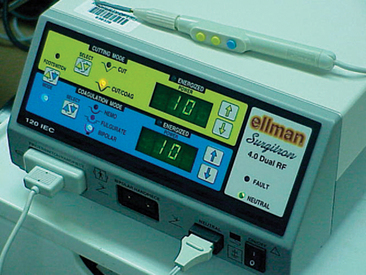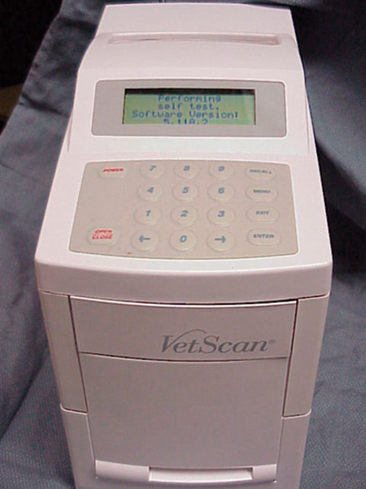CHAPTER 2 PREPARING YOUR HOSPITAL FOR EXOTIC PETS
ADVANTAGES AND DISADVANTAGES OF INCOROPORATING EXOTIC PETS INTO A VETERINARY PRACTICE
The inclusion of exotic pets into a veterinary practice can also be financially rewarding. Yes, there are those clients that will remind the veterinarian that their pet hamster can be replaced for $5, but there are also those who will pursue any level of care for their $5 hamster because of the human-animal bond they have developed with their pet. The same mentality is still held for “outdoor” cats and “pound” puppies. Until there is a real recognition of the responsibility associated with owning a pet, there will always be clients (e.g., dog, cat, horse, and exotic) who believe veterinary care is expensive and unnecessary. I will not focus on them in this chapter. Instead, I will focus on the fact that being a thorough diagnostician can be financially rewarding. Exotic animals have evolved to mask their illness to avoid predation. Therefore, to fully ascertain the status of an exotic pet requires the pursuit of diagnostic tests. A physcial examination alone will not suffice. At minimum, a database for exotic pets should include a complete blood count, plasma chemistry, urinalysis (mammals), and fecal examination. In many cases, radiographs, ultrasound, or endoscopy are also required. Veterinarians that successfully treat exotic pets are able to explain to their clients the necessity of these diagnostics for evaluating their patient’s condition while, at the same time, generating income for their practice. Working with exotic pets requires more “client time” than does working with domestic pets. Often it is important to spend additional time with the client, covering husbandry and nutrition issues that would be unnecessary with a dog or cat client. Because of the additional time required to work with these animals, veterinarians should institute fees commen-surate with the time allocated to the examination and consultation.
I, along with the other editor of this text, believe that the potential disadvantages associated with incorporating exotic pets into a practice are truly negligible. One of the potential disadvantages mentioned previously was the need to acquire continuing education and literature to expand the veterinarian’s medical knowledge base. With the large number of available national and international continuing education opportunities (e.g., Central Veterinary Conference, Kansas City, MO; North American Veterinary Conference, Orlando, FL; Western Veterinary Conference, Las Vegas, NV) that incorporate both domestic and exotic species, the potential to obtain the necessary knowledge and hands-on laboratories to expand clinical skills in exotic pets while maintaining learning opportunities with domestic pets is great. Those interested in further expanding their opportunities to learn exotic pet medicine and remaining current on new trends and scientific discovery in the field of exotic pet medicine can become members of the various exotic species professional veterinarian organizations (Table 2-1).
TABLE 2-1 Professional Exotic Species Associations
| Organization | Contact Information | Journals |
|---|---|---|
| American Association of Zoo Veterinarians | http://www.aazv.org/ | Journal of Zoo and Wildlife Medicine (Quarterly) |
| Association of Avian Veterinarians | http://www.aav.org/ | Journal of Avian Medicine and Surgery (Quarterly) |
| Association of Exotic Mammal Veterinarians | http://www.aemv.org/ | Journal of Exotic Pet Medicine (Quarterly) |
| Association of Reptilian and Amphibian Veterinarians | http://www.arav.org/ | Journal of Herpetological Medicine and Surgery (Quarterly) |
| International Association for Aquatic Animal Medicine | http://www.iaaam.org/ | IAAAM News (Quarterly) |
| National Wildlife Rehabilitator’s Association | http://www.nwrawildlife.org/ | Wildlife Rehabilitation Bulletin |
| Wildlife Disease Association | http://www.wildlifedisease.org/ | Journal of Wildlife Diseases (Quarterly) |
The argument that the inclusion of exotic pets into a practice will lead to significant expenses for equipment is not valid for high-quality small animal practices. The majority of the equipment that is used to treat and diagnose exotic pets is also invaluable for domestic cases. For example, a radiosurgery unit (Ellman International, Inc., Oceanside, NY) (Figure 2-1) is used extensively in my practice to manage hemorrhage and minimize tissue trauma for small patients. This same unit can, and in many cases should, be used by those working with domestic pets for the same inherent reasons. The VetScan (Abaxis Inc., Union City, CA) (Figure 2-2) chemistry analyzer provides the exotic animal veterinarian with the ability to analyze chemistries from 100 mL of whole blood or plasma. This is important when dealing with small patients, such as budgerigars or geckos. However, those of us who work with (or have worked with) domestic pets can certainly remember those times when no more than 100 mL of blood could be collected from a puppy or fractious cat. Again, the “proposed” expense would not only be useful for incorporating exotic pets but would simplify diagnostic testing for domestic species as well.
“If you build it, they will come” is the famous line from the 1989 movie Field of Dreams. Can the same be said for an exotic practice? By expanding a practice, will clients inherently come? If veterinarians promote the fact that their practices accept exotic pets to their current client base, and, their clients have both domestic and exotic pets,1 veterinarians may realize an immediate expansion of their practices. A detailed history for domestic pets should include a question asking clients if they have other pets. This information can then be used to promote the practice’s treatment of exotics. In addition to promoting exotic pets with established clients, veterinary practitioners can also pursue new clients by establishing relationships with local retailers and local specialty clubs. Pet retailers are generally the primary source of exotic animals in a community. It is worthwhile to schedule time with a local retailer to discuss the specific needs of the different exotic pets they have for sale. It also can be beneficial for the veterinarian to offer a training seminar for the pet retail employees. Providing these individuals with information about exotic pet care will help ensure that the pet retail employees make the appropriate recommendations to potential pet owners. Historically, veterinarians do not visit with a pet owner until after they have purchased the animal and the equipment. In many cases, veterinarians may have to educate the client on the incorrect purchases they made, which for many, is upsetting. A proactive approach of training pet retailers can prevent unnecessary animosity between the veterinarian and the pet retailer. By establishing a solid relationship with the pet retailer, the veterinarian can expect to receive referrals, which will expand his or her caseload and be financially rewarding.
Stay updated, free articles. Join our Telegram channel

Full access? Get Clinical Tree




